-
Điện thoại : +8618150976625
-
E-mail : Hello@MicrofiberLeather.com
Điện thoại : +8618150976625
E-mail : Hello@MicrofiberLeather.com
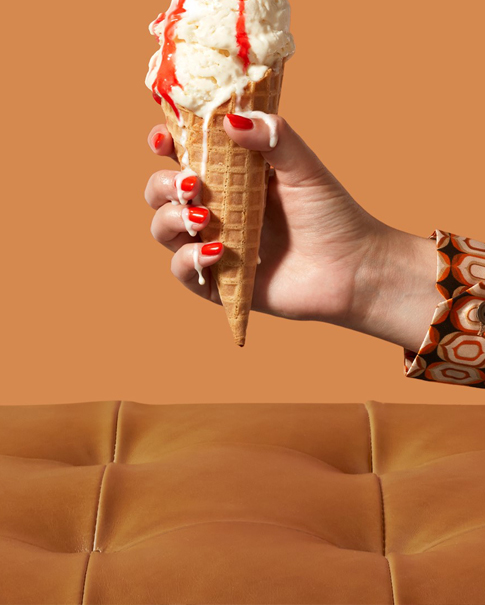
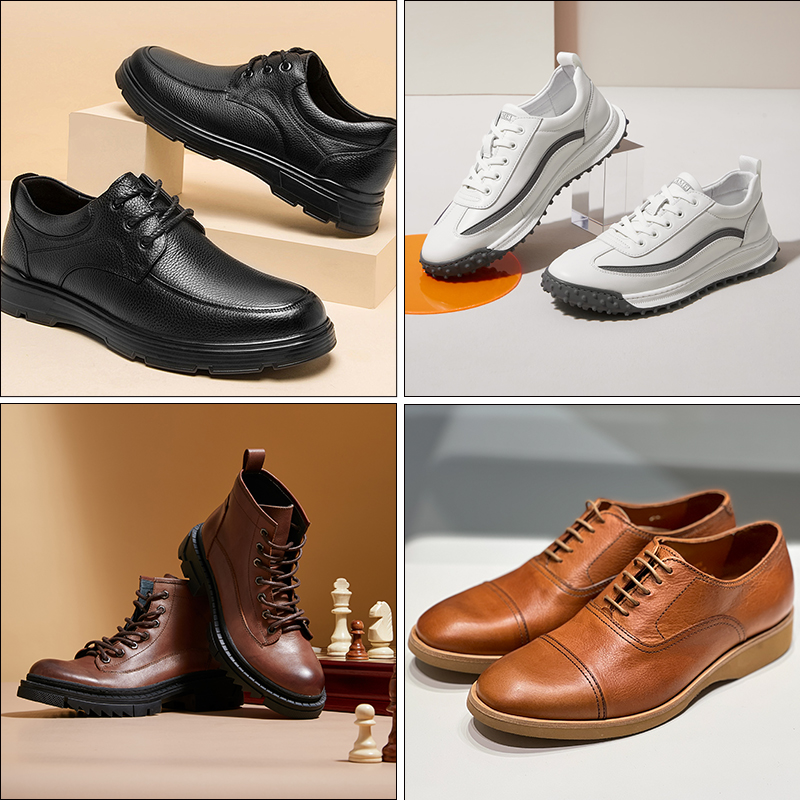
Tôi thường được hỏi liệu Giày chất liệu PU Hãy đầu tư thông minh. Theo kinh nghiệm của tôi, chúng mang lại giá trị tuyệt vời cho những người có ngân sách eo hẹp và mang đến phong cách ấn tượng mà không cần sử dụng sản phẩm từ động vật. Tuy nhiên, tôi nhận thấy chúng đôi khi không thoáng khí và có thể không bền bằng da thật. Tôi cân nhắc những yếu tố này khi chọn đôi giày phù hợp với nhu cầu của mình.
Da PU giày có giá cả phải chăng, là lựa chọn tuyệt vời cho những người mua sắm có ngân sách eo hẹp.
Những đôi giày này có kiểu dáng thời trang và nhiều mẫu mã khác nhau, hoàn hảo để mặc thường ngày.
Da PU thân thiện với động vật, cung cấp giải pháp thay thế không tàn ác cho da truyền thống.
Trong khi giày PU là nhẹ và dễ vệ sinh, chúng có thể thiếu khả năng thoáng khí và độ bền theo thời gian.
Hãy cân nhắc kỹ nhu cầu của bạn; da PU phù hợp với mục đích sử dụng nhẹ nhưng có thể không phù hợp với các hoạt động nặng.
Khi tôi tìm kiếm đôi giày cân bằng giữa chất lượng và giá cả, tôi thường tìm đến da puNgành công nghiệp giày dép sử dụng cả hai Polyurethane MDI và TDI trong giày tổng hợp. MDI mang lại độ bền ấn tượng cho giày, trong khi TDI tăng cường độ đàn hồi và thoải mái, đặc biệt là ở phần lót giày. Những đặc điểm này giúp giữ giá thành giày da PU ở mức thấp mà không ảnh hưởng đến hiệu suất. Tôi nhận thấy rằng nhiều người mua sắm nhạy cảm về giá So sánh các lựa chọn da tổng hợp giữa các thương hiệu, đặc biệt là trực tuyến. Thương mại điện tử giúp dễ dàng tìm kiếm các ưu đãi và khuyến mãi, điều này càng làm tăng thêm sức hấp dẫn của da PU đối với những người mua có ngân sách eo hẹp. Giá cả phải chăng của giày da tổng hợp là một điểm nổi bật, đặc biệt là khi tôi so sánh da PU với da giả và da thật.
Tôi đánh giá cao cảm giác nhẹ nhàng mà đôi giày tổng hợp làm từ da PU mang lại cho đôi chân tôi. Nhựa polyurethane, thành phần chính trong những đôi giày này, mang lại cả hai lợi ích. độ bền và tính linh hoạtSự kết hợp này giúp giày của tôi bền hơn và thích ứng với chuyển động của bàn chân. Tôi thấy rằng các công thức PU chuyên biệt mang lại độ đệm tốt hơn, hỗ trợ bàn chân tôi trong những ngày dài. Độ đàn hồi của vật liệu tổng hợp cho phép chuyển động tốt hơn, giúp giày da PU thoải mái khi mang hàng ngày. Khi so sánh da PU với da giả, tôi nhận thấy cả hai đều mang lại sự thoải mái tương đương, nhưng PU thường mang lại cảm giác nâng đỡ tốt hơn theo thời gian.
Phong cách rất quan trọng với tôi, và giày tổng hợp làm từ da PU mang đến nhiều lựa chọn thời trang. Các nhà sản xuất có thể dễ dàng tạo hình PU thành nhiều hình dạng, kết cấu và màu sắc khác nhau. Tính linh hoạt này cho phép tôi lựa chọn từ những thiết kế hợp thời trang mô phỏng vẻ ngoài của da thật. Phân biệt giữa da thật da và pu Da thật có thể khá khó phối đồ vì giày tổng hợp hiện đại trông rất hợp mốt. Tôi thường thấy giày da PU với cả kiểu dáng cổ điển lẫn táo bạo, giúp tôi dễ dàng phối đồ. Lớp phủ tổng hợp cũng chống phai màu, giúp giày của tôi giữ được vẻ ngoài mới lâu hơn.
Một trong những lý do tôi thích da PU cho mục đích sử dụng hàng ngày là khả năng chống nước và dầu của nó. Các thử nghiệm trong phòng thí nghiệm cho thấy giày tổng hợp làm từ da PU đạt tiêu chuẩn nghiêm ngặt về khả năng thấm nước, hấp thụ và tính linh hoạt. Sau đây là tổng quan nhanh về hiệu suất của da PU trong các thử nghiệm này:
Tên bài kiểm tra | Mục đích | Kết quả tốt |
|---|---|---|
Sự thẩm thấu và hấp thụ nước | Đo lượng nước vào và hấp thụ | Thời gian thẩm thấu ≥ 60 phút, Độ hấp thụ ≤ 15% |
Khả năng chống thấm nước động (Thử nghiệm uốn cong) | Khả năng chống nước khi uốn cong | ≥ 20.000 lần uốn cong = Tốt, ≥ 50.000 = Xuất sắc |
Kiểm tra áp suất thủy tĩnh | Khả năng chịu áp lực nước trước khi rò rỉ | ≥ 5.000 mmH₂O = Không thấm nước, ≥ 10.000 = Cao |
Sự hấp thụ và giải hấp nước | Tỷ lệ hấp thụ và giải phóng | Hấp thụ ≤ 15%, Giải hấp ≥ 60% |
Khả năng chịu uốn (Không có nước) | Độ linh hoạt và khả năng chống nứt | Không có vết nứt sau 50.000–100.000 chu kỳ |
Kiểm tra vết nước / Kiểm tra giọt nước | Khả năng chống thấm nước bề mặt | Không thấy vòng tròn hoặc thay đổi màu sắc sau khi khô |
Tôi thấy rằng giày tổng hợp bằng da PU giúp chân tôi khô ráo khi trời ẩm ướt và chống bám dầu, rất phù hợp với thời tiết khó lường.
Tôi coi trọng những đôi giày dễ chăm sóc, và giày da PU tổng hợp hoàn toàn đáp ứng được nhu cầu này. Không giống như da thật, cần được xử lý cẩn thận sau khi bị đổ nước, tôi chỉ cần lau sạch da PU. Điều này khiến giày da tổng hợp trở nên lý tưởng để sử dụng ngoài trời và bớt căng thẳng hơn trong những ngày mưa. Tôi nhận thấy việc phân biệt da thật và da PU trở nên dễ dàng hơn khi tôi thấy việc bảo quản giày da tổng hợp rất đơn giản. Chỉ cần lau nhanh là có thể loại bỏ hầu hết các vết bẩn, trong khi da thật cần được xử lý đặc biệt để tránh hư hỏng. Tính năng ít cần bảo trì này giúp tôi tiết kiệm thời gian và công sức.
Là một người quan tâm đến phúc lợi động vật, tôi đánh giá cao việc da PU mang đến một giải pháp thay thế không tàn ác cho da truyền thống. Sự trỗi dậy của chủ nghĩa tiêu dùng thân thiện với môi trường và có đạo đức đã thay đổi cách tôi mua sắm giày dép. Nhiều thương hiệu hiện nay sử dụng vật liệu tổng hợp để tạo ra những đôi giày thời trang, chất lượng cao với chi phí thấp hơn. Tôi thấy các thương hiệu thời trang nhanh sử dụng da PU để đáp ứng nhu cầu về các lựa chọn giá cả phải chăng, không thử nghiệm trên động vật. Những người mua sắm trẻ tuổi, bao gồm cả tôi, thường ưa chuộng các sản phẩm thân thiện với môi trường và động vật. Tính minh bạch trong sản xuất và nhãn sinh thái cũng ảnh hưởng đến lựa chọn của tôi, khiến giày tổng hợp da PU trở thành lựa chọn hàng đầu cho thời trang đạo đức.
Độ bền là yếu tố quan trọng đối với tôi khi chọn giày. Da PU tổng hợp nổi bật với khả năng chống mài mòn và độ bền ấn tượngDưới đây là bảng nêu bật các điểm mạnh về mặt kỹ thuật của PU trong giày dép:
Tài sản | Đóng góp vào khả năng chống mài mòn và độ bền |
|---|---|
Khả năng chống mài mòn tốt | Cao cấp hơn cao su thông thường, thường tốt hơn gấp 3-5 lần, lý tưởng cho khả năng chống mài mòn và hấp thụ sốc. |
Tính chất cơ học tuyệt vời | Độ bền và độ dẻo dai cao cho phép chịu được lực và va đập lớn từ bên ngoài. |
Độ đàn hồi cao | Duy trì độ đàn hồi cao trong phạm vi độ cứng rộng, giúp phục hồi nhanh chóng sau ứng suất. |
Độ ổn định hóa học tốt | Chống lại sự ăn mòn của axit, kiềm và các hóa chất khác, duy trì hiệu suất ổn định trong môi trường khắc nghiệt. |
Khả năng chống dầu và chống lão hóa | Hoạt động tốt khi tiếp xúc với dầu và hóa chất, có khả năng chống lão hóa tốt hơn cao su tự nhiên. |
Khả năng chịu nhiệt độ cao và thấp vượt trội | Có thể chịu được nhiệt độ từ -50 °C đến 120 °C, vẫn duy trì được độ mềm dẻo và đàn hồi trong điều kiện khắc nghiệt. |
Tôi thấy giày tổng hợp làm từ da PU bền hơn nhiều loại da tổng hợp khác. Khả năng chống mài mòn, chống hóa chất và chịu nhiệt độ khắc nghiệt của chúng giúp chúng phù hợp với nhiều môi trường khác nhau. Độ bền của da PU đảm bảo giày của tôi luôn trong tình trạng tốt, ngay cả khi sử dụng thường xuyên.
Mẹo: Nếu bạn muốn một đôi giày kết hợp giữa phong cách, sự thoải mái và giá trị thân thiện với môi trường thì giày da PU tổng hợp sẽ là giải pháp thông minh cho trang phục hàng ngày.
Khi tôi mang giày làm từ da puTôi nhận thấy chúng thường có cảm giác cứng hơn so với những loại được làm từ các vật liệu khác. Độ cứng này đến từ độ bền và độ bền cao của polyurethaneMặc dù những đặc tính này giúp giày bền hơn, nhưng chúng cũng hạn chế độ đàn hồi. Tôi đã so sánh giày PU với giày đế ethylene-vinyl acetate (EVA), và sự khác biệt rất rõ ràng. Giày EVA uốn cong và hấp thụ năng lượng tốt hơn, giúp chúng thoải mái hơn cho các hoạt động đòi hỏi nhiều chuyển động. Dưới đây là một số điểm tôi đã quan sát được:
Polyurethane và polyurethane nhiệt dẻo có độ bền và độ bền cao.
Độ cứng tăng lên của giày PU làm giảm khả năng hấp thụ sốc của chúng.
Giày EVA có độ linh hoạt cao hơn và khả năng hấp thụ năng lượng tốt hơn, tôi thấy thoải mái hơn khi chạy bộ hoặc chơi thể thao.
Nếu bạn cần giày cho các hoạt động đòi hỏi sự linh hoạt thì nhược điểm của da PU là độ cứng có thể trở thành một nhược điểm thực sự.
Độ thoáng khí là một điểm yếu khác của giày da PU. Tôi đã đi giày PU vào những ngày ấm áp và nhận thấy chân mình nóng và đổ mồ hôi nhanh hơn nhiều so với giày da tự nhiên hoặc giày lưới. Bề mặt tổng hợp của PU không cho phép không khí lưu thông dễ dàng. Việc thiếu thông thoáng này có thể gây khó chịu, đặc biệt là khi mang trong thời gian dài. Tôi đã thấy nhiều thương hiệu cố gắng cải thiện điều này bằng cách thêm các lỗ đục hoặc tấm lưới, nhưng chất liệu lõi vẫn hạn chế luồng không khí. Đối với những người coi trọng sự mát mẻ và khô ráo cho đôi chân, đây là một nhược điểm đáng kể.
Các tác động môi trường Việc sản xuất da PU đã trở thành mối quan tâm lớn đối với tôi. Tôi quan tâm đến các lựa chọn thân thiện với môi trường, vì vậy tôi rất chú ý đến quy trình sản xuất giày của mình. Quy trình sản xuất da PU sử dụng hóa chất và năng lượng, có thể gây hại cho môi trường. Tôi đã học được rằng pu không thể phân hủy sinh học, nghĩa là giày cũ có thể nằm trong bãi rác nhiều năm. Việc tái chế giày PU cũng khó khăn vì chúng thường chứa nhiều loại vật liệu khác nhau. Dưới đây là một bảng so sánh tác động môi trường của pu, da và vật liệu tái chế:
Diện mạo | Vật liệu PU Sự va chạm | Tác động của da | Tác động của vật liệu tái chế |
|---|---|---|---|
Công thức thân thiện với môi trường | Hệ thống pu gốc nước giúp giảm phát thải VOC | Thuộc da tạo ra chất thải có hại | Tác động thấp hơn do giảm sử dụng tài nguyên |
Hiệu quả sản xuất | Tự động hóa làm giảm chất thải | Quy trình sử dụng nhiều tài nguyên | Giảm chi phí sản xuất và chất thải |
Tập trung vào tính bền vững | Những đổi mới về pu sinh học giải quyết các mối quan ngại | Dấu chân carbon cao | Hỗ trợ nền kinh tế tuần hoàn |
Mặc dù đã có một số tiến bộ thân thiện với môi trường, nhưng những tác động môi trường của việc sử dụng da PU vẫn còn đáng lo ngại. Tôi đã đọc được rằng PU có thể thải ra vi nhựa vào môi trường, làm tăng thêm ô nhiễm. Các thương hiệu như Nike và Adidas đang nghiên cứu PU tái chế để giảm thiểu tác động đến môi trường, nhưng những giải pháp này vẫn còn khá mới mẻ. Tôi luôn cân nhắc những tác động môi trường của việc sử dụng da PU trước khi quyết định mua hàng.
Sự thoải mái là ưu tiên hàng đầu của tôi khi chọn giày. Mặc dù giày da PU có đệm, nhưng tôi thấy chúng không thể sánh được với giày thể thao hiệu suất cao về độ nâng đỡ và độ thoải mái. Nhiều giày thể thao sử dụng vật liệu tiên tiến như bọt Ortholite hoặc ETPU phân hủy sinh học để có độ đệm vượt trội và phản ứng như lò xo. Những đặc điểm này giúp chân tôi thoải mái trong các hoạt động cường độ cao. Ngược lại, giày PU thường thiếu độ nâng đỡ tương tự, đặc biệt là đối với những người có tình trạng bàn chân đặc biệt. Độ thoáng khí và độ cứng hạn chế cũng có thể khiến chúng kém thoải mái hơn khi mang cả ngày.
Tôi thường được hỏi: "Da PU bền được bao lâu?" Theo kinh nghiệm của tôi, giày PU trông rất đẹp khi mới, nhưng vẻ ngoài của chúng có thể thay đổi nhanh chóng. Theo thời gian, tôi đã thấy da PU bị nứt, bong tróc hoặc phai màu, đặc biệt là khi sử dụng nhiều. Không giống như da thật, có lớp gỉ độc đáo, da PU thường bị mòn theo những cách kém thẩm mỹ hơn. Tôi nhận thấy rằng việc tiếp xúc với ánh nắng mặt trời và độ ẩm sẽ đẩy nhanh quá trình này. Nếu bạn muốn đôi giày giữ được vẻ ngoài trong nhiều năm, đây là một yếu tố quan trọng cần cân nhắc. Khi so sánh độ bền của da PU với các chất liệu khác, tôi thấy rằng độ bền không phải lúc nào cũng cao như quảng cáo.
Tôi nhận ra rằng giày da PU không phù hợp với mọi hoạt động. Độ cứng và khả năng thoáng khí hạn chế khiến chúng trở thành lựa chọn kém cho các hoạt động thể thao hoặc hoạt động ngoài trời nặng nhọc. Khi cần giày để đi bộ đường dài, chạy bộ hoặc làm việc trong môi trường khắc nghiệt, tôi ưu tiên những lựa chọn có độ đàn hồi, đệm và hỗ trợ tốt hơn. Giày thể thao thường có phần thân giày dệt kim thoáng khí, đệm gót chân có đệm và đế trong có thể tháo rời để điều chỉnh vừa vặn. Những đặc điểm này hiếm khi tìm thấy ở giày PU. Nếu bạn cần giày cho các hoạt động tác động mạnh hoặc chuyên biệt, PU có thể không đáp ứng được nhu cầu của bạn.
Ghi chú: Mặc dù giày da PU mang lại nhiều lợi ích, tôi luôn cân nhắc những nhược điểm này trước khi đưa ra quyết định. Tác động đến môi trường, những hạn chế về độ thoải mái và độ bền đóng vai trò quan trọng trong lựa chọn của tôi. Nếu bạn coi trọng các sản phẩm thân thiện với môi trường và hiệu suất lâu dài, bạn có thể muốn khám phá các vật liệu khác.
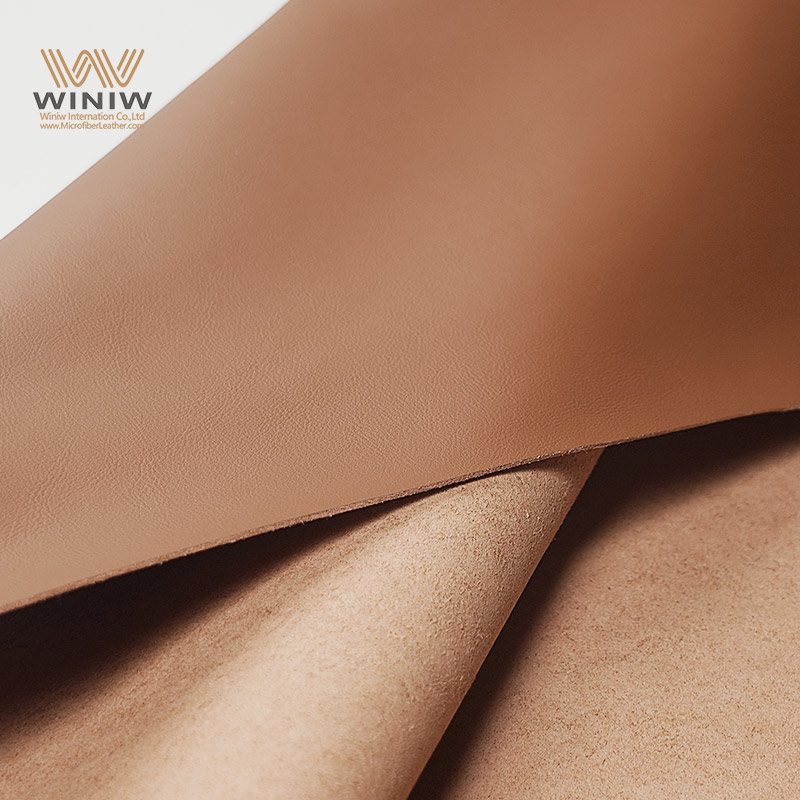
Tôi luôn luôn khuyên bạn nên giày da pu Dành cho những người bạn muốn tiết kiệm chi phí. Mức giá của da PU khiến nó trở thành một lựa chọn thông minh cho bất kỳ ai có ngân sách eo hẹp. Tôi thấy giày da PU thường có giá thấp hơn nhiều so với da thật, nhưng chúng vẫn trông rất thời trang. Nhiều thương hiệu cung cấp da PU như một lựa chọn thay thế thân thiện với môi trường cho các vật liệu truyền thống. Tôi đã thấy giày da PU được bán ở cả cửa hàng địa phương và các cửa hàng trực tuyến. Giá cả phải chăng của da PU cho phép tôi mua nhiều đôi cho nhiều dịp khác nhau mà không tốn kém.
Khi muốn làm mới tủ đồ, tôi chọn giày da PU vì kiểu dáng và tính linh hoạt của chúng. Các nhà thiết kế sử dụng da PU để tạo ra những phong cách thời trang mô phỏng da thật. Tôi nhận thấy da PU có nhiều màu sắc và lớp hoàn thiện, giúp tôi dễ dàng phối giày với mọi trang phục. Cho những buổi đi chơi bình thường hoặc sự kiện xã hội, tôi tin tưởng giày da PU để giữ vẻ ngoài luôn mới mẻ. Lớp hoàn thiện tổng hợp của da PU chống bám bẩn và phai màu, giúp giày của tôi luôn đẹp lâu hơn. Tôi đánh giá cao việc da PU mang đến một lựa chọn thân thiện với môi trường cho những người yêu thời trang và quan tâm đến môi trường.
Là một người coi trọng phúc lợi động vật, tôi tìm kiếm những đôi giày không sử dụng sản phẩm từ động vật. Da PU nổi bật là một lựa chọn thay thế thân thiện với môi trường cho người ăn chay. Tôi thấy ngày càng nhiều thương hiệu dán nhãn giày da PU thân thiện với người ăn chay. Sự minh bạch này giúp tôi dễ dàng mua sắm theo đúng giá trị của mình. Tôi cảm thấy yên tâm khi biết rằng giày da PU của mình không gây hại cho động vật. Tính thân thiện với môi trường của da PU cũng hấp dẫn mong muốn của tôi về thời trang bền vững.
Tôi thường chọn giày da pu dành cho những dịp tôi không cần giày dép nặng nề. Ví dụ, tôi mang giày da PU đến văn phòng hoặc đi bộ đường dài. Tính chất nhẹ của da PU giúp những đôi giày này thoải mái khi sử dụng hàng ngày. Tôi thấy da PU rất phù hợp cho những sự kiện mà tôi muốn trông chỉn chu nhưng không cần độ bền tối đa. Khi tôi muốn một lựa chọn thay thế thân thiện với môi trường cho những dịp nhẹ nhàng hoặc thỉnh thoảng đi chơi, giày da PU hoàn toàn đáp ứng nhu cầu của tôi.
Mẹo: Nếu bạn muốn có đôi giày giá cả phải chăng, hợp thời trang và thân thiện với môi trường thì da pu là lựa chọn tuyệt vời cho nhiều tình huống hàng ngày.
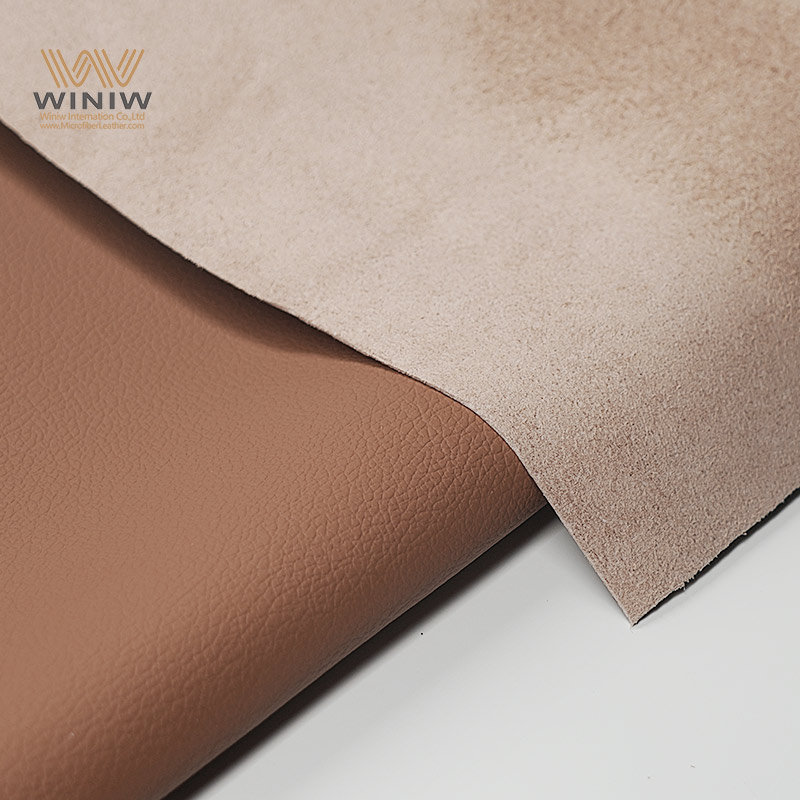
Tôi đã mặc giày da pu Trong các hoạt động ngoài trời. Chất liệu này thường không chịu được địa hình gồ ghề và độ ẩm liên tục. Khi đi bộ đường dài hoặc làm việc ngoài trời, tôi cần những đôi giày có độ đàn hồi và độ bền cao. Da PU thường bị nứt hoặc bong tróc sau nhiều lần tiếp xúc với đá và bùn. Tôi nhận thấy đế giày nhanh chóng mất độ bám, làm tăng nguy cơ trượt ngã. Đối với các công việc nặng nhọc, tôi thường sử dụng giày làm từ vật liệu bền hơn. Giày da PU không đảm bảo độ bền cần thiết cho những môi trường khắc nghiệt.
Độ bền là yếu tố quan trọng nhất khi tôi chọn giày để mang hàng ngày. Giày da PU thoạt nhìn có vẻ đẹp, nhưng chúng nhanh bị mòn hơn. da thậtTôi thấy các nếp nhăn và hư hỏng bề mặt chỉ sau vài tháng sử dụng thường xuyên. Lớp phủ tổng hợp trên da PU thường bị bong tróc, đặc biệt là ở phần mũi và gót giày. Khi tôi cần những đôi giày bền bỉ trong nhiều năm, tôi tránh dùng da PU. Chất liệu này không thể sánh được với hiệu suất lâu dài của da tự nhiên hoặc da tổng hợp cao cấp. Tôi chỉ khuyên dùng da PU cho mục đích sử dụng thỉnh thoảng, không dùng cho những trường hợp đòi hỏi độ bền cao.
Các hoạt động thể thao đòi hỏi giày dép có khả năng hỗ trợ và thoáng khí vượt trội. Tôi đã thử chạy bộ bằng giày thể thao da PU. Sau một thời gian ngắn, chân tôi nóng và khó chịu. Việc thiếu thông thoáng của da PU khiến luồng không khí bị hạn chế, dẫn đến đổ mồ hôi quá nhiều. Tôi cũng nhận thấy độ cứng của da PU hạn chế chuyển động của mình. Đối với các môn thể thao hoặc bài tập tác động mạnh, tôi thích giày có phần trên bằng lưới và đế đệm. Da PU không mang lại độ đàn hồi hoặc sự thoải mái cần thiết cho hiệu suất thể thao. Tôi khuyên các vận động viên nên chọn giày được thiết kế riêng cho môn thể thao của họ.
Tôi quan tâm đến các lựa chọn thân thiện với môi trường và tính bền vững. Giày da PU thường sử dụng hóa dầu, làm tăng lượng khí thải carbon. Khi so sánh da PU với giày bền vững, tôi thấy sự khác biệt rõ ràng:
Diện mạo | Giày chất liệu PU | |
|---|---|---|
Nguồn vật liệu | Thường có nguồn gốc từ hóa dầu | Công thức sinh học từ nguồn tài nguyên tái tạo |
Tác động môi trường | Lượng khí thải carbon cao hơn do sử dụng hóa dầu | Giảm lượng khí thải carbon, thúc đẩy tính bền vững |
Đổi mới | Các công thức PU có nguồn gốc sinh học và có thể tái chế đang nổi lên | Tập trung vào nền kinh tế tuần hoàn và khả năng tái chế |
Tuân thủ quy định | Sự tuân thủ khuyến khích những đổi mới thân thiện với môi trường | Nhấn mạnh mạnh mẽ vào các hoạt động bền vững |
Tôi nhận thấy giày bền vững sử dụng tài nguyên tái tạo và chú trọng vào khả năng tái chế. Giày da PU lại chậm chân trong việc thực hiện các biện pháp thân thiện với môi trường. Mặc dù một số thương hiệu thử nghiệm với PU sinh học, nhưng phần lớn vẫn dựa vào quy trình sản xuất truyền thống. Tôi chọn giày dép thân thiện với môi trường khi muốn giảm thiểu tác động đến môi trường. Da PU không phù hợp với các giá trị bền vững của tôi.
Nếu bạn cần giày cho những điều kiện khắc nghiệt, chơi thể thao hoặc muốn ủng hộ các sáng kiến thân thiện với môi trường, thì da pu có thể không phải là lựa chọn tốt nhất.
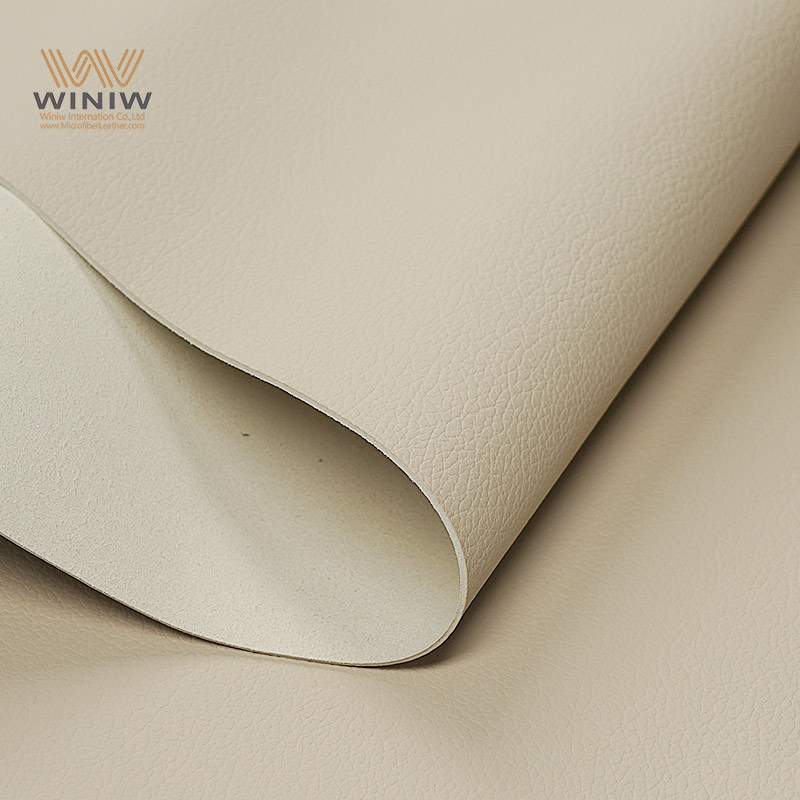
Khi cân nhắc mua giày chất liệu PU, tôi luôn bắt đầu bằng việc liệt kê những ưu và nhược điểm chính. Tôi thấy rằng da PU mang lại vẻ ngoài thời trang, giá cả phải chăng và vẻ ngoài thân thiện với động vật. Những đôi giày này thường có nhiều màu sắc và kiểu dáng, khiến chúng trở thành lựa chọn yêu thích của những người sành điệu. Tôi cũng đánh giá cao khả năng chống nước và dầu của da PU, giúp việc chăm sóc hàng ngày trở nên dễ dàng. Tuy nhiên, tôi nhận thấy giày chất liệu PU có thể hơi cứng và có thể không thoáng khí. Theo thời gian, da PU có xu hướng bị nứt hoặc bong tróc, đặc biệt là khi sử dụng nhiều. tác động môi trường của pu cũng khiến tôi lo ngại vì hầu hết giày làm bằng chất liệu PU đều không tự phân hủy được.
Sau đây là bảng nhanh tôi sử dụng để so sánh các điểm chính:
Ưu điểm của giày da PU | Nhược điểm của giày da PU |
|---|---|
Có thể chi trả | Có thể cảm thấy cứng |
Phong cách và đa năng | Khả năng thở hạn chế |
Dễ dàng vệ sinh | Có thể nứt hoặc bong tróc theo thời gian |
Thân thiện với động vật | Không phân hủy sinh học |
Chống nước và dầu | Ít bền hơn khi sử dụng nhiều |
Tôi luôn tự nhắc nhở mình rằng không có chất liệu giày nào là hoàn hảo. Lựa chọn tốt nhất phụ thuộc vào điều tôi coi trọng nhất.
Tôi lựa chọn giày dép phù hợp với lối sống và ưu tiên của mình. Nếu muốn một đôi giày vừa túi tiền, hợp thời trang cho những buổi đi chơi thường ngày, tôi sẽ chọn giày chất liệu PU. Khi cần giày cho trang phục công sở nhẹ nhàng hoặc các sự kiện nhỏ, da PU là lựa chọn phù hợp. Đối với những người quan tâm đến phúc lợi động vật, da PU là một lựa chọn thuần chay đáng tin cậy. Tuy nhiên, nếu dự định đi bộ đường dài, chạy bộ hoặc làm việc ngoài trời, tôi sẽ tránh giày chất liệu PU. Tôi tìm kiếm những chất liệu bền hơn khi cần hiệu suất lâu dài. Nếu tính bền vững là ưu tiên hàng đầu, tôi sẽ tìm kiếm các thương hiệu sử dụng PU tái chế hoặc có nguồn gốc sinh học.
Tôi luôn tự hỏi mình những câu hỏi này trước khi mua:
Tôi sẽ đi đôi giày này hàng ngày hay chỉ thỉnh thoảng thôi?
Tôi có cần sự thoải mái và thoáng khí tối đa không?
Phúc lợi động vật hoặc thân thiện với môi trường quan trọng với tôi như thế nào?
Tôi có sẵn sàng đánh đổi độ bền để lấy mức giá thấp hơn không?
Bằng cách trả lời những câu hỏi này, tôi chắc chắn rằng đôi giày chất liệu PU tiếp theo của tôi sẽ phù hợp với nhu cầu và giá trị của tôi.
Sau khi cân nhắc ưu và nhược điểm, tôi thấy giày da PU thực sự mang lại giá trị cho nhiều người. Tôi chọn da PU khi cần một đôi giày vừa thời trang, vừa hợp túi tiền và thân thiện với động vật. Tôi biết da PU không bền bằng một số chất liệu khác, nhưng nó đáp ứng nhu cầu sử dụng hàng ngày và nhẹ nhàng của tôi. Tôi luôn kiểm tra xem da PU có phù hợp với phong cách sống của mình hay không trước khi mua. Tôi khuyến khích bạn cân nhắc kỹ lưỡng các ưu tiên của mình. Nếu bạn muốn dễ chăm sóc và phong cách hiện đại, da PU có thể là một lựa chọn tốt. Tôi tin tưởng vào kinh nghiệm của mình với da PU để định hướng lựa chọn. Bạn có thể tự tin vào quyết định của mình khi hiểu rõ những lợi ích mà da PU mang lại.
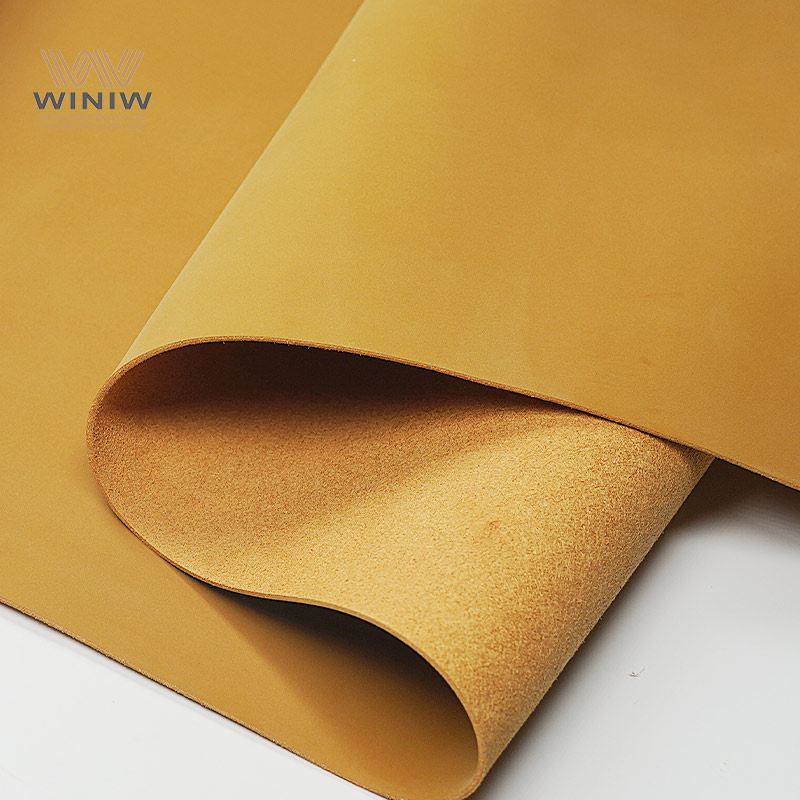
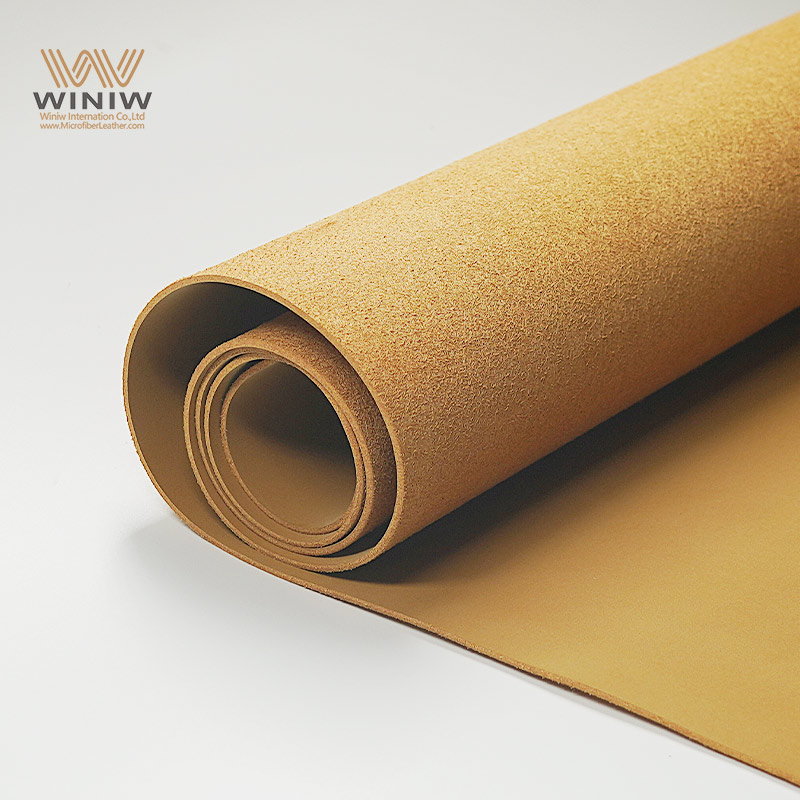
tôi hiểu rồi da pu Là một vật liệu tổng hợp làm từ polyurethane. Nó trông giống da thật nhưng giá thành rẻ hơn. Da PU không sử dụng da động vật. Tôi nhận thấy da thật mềm mại hơn và bền hơn, trong khi da PU có nhiều lựa chọn màu sắc hơn và dễ vệ sinh hơn.
Tôi đi giày da PU vào những ngày mưa. Bề mặt giày chống nước và dầu. Da PU giúp chân tôi khô ráo khi trời mưa nhẹ. Tôi lau sạch vết đổ dễ dàng. Tôi tránh vũng nước sâu vì da PU có thể không chống thấm nước khi trời mưa lớn.
Tôi thấy giày da PU bền khoảng một đến hai năm nếu sử dụng thường xuyên. Chất liệu có thể bị nứt hoặc bong tróc theo thời gian. Tôi thấy da PU không có lớp gỉ như da thật. Tôi thường thay giày da PU khi thấy dấu hiệu mòn rõ rệt.
Tôi đi giày da PU cho những chuyến đi ngắn. Chất liệu nhẹ, nhưng tôi thấy độ thoáng khí kém hơn. Da PU có thể bị cứng sau nhiều giờ sử dụng. Tôi chọn giày da PU cho các sự kiện thường ngày, không phải cho những chuyến đi bộ đường dài hay các hoạt động thể thao.
Tôi tìm hiểu kỹ về da PU trước khi mua. Hầu hết da PU có nguồn gốc từ hóa dầu. Quy trình sản xuất sử dụng năng lượng và hóa chất. Da PU không dễ bị phân hủy. Tôi tìm kiếm các thương hiệu sử dụng da PU tái chế hoặc da PU sinh học để giảm thiểu tác động đến môi trường.
Mẹo: Tôi luôn kiểm tra nhãn sản phẩm để biết lựa chọn da pu thân thiện với môi trường.
THẺ NÓNG :
Vẻ ngoài sang trọng Faux Suede cho quầy trưng bày trang sức
Quần áo Polyurethane là gì và tại sao nên chọn nó?
Business Phone : +8618150976625
E-mail : Hello@MicrofiberLeather.com
Mobile & WhatsApp : +8618150976625
Địa chỉ nhà : W6-302 Shimao Manhadun Shuanglong Road, Jinjiang Quanzhou Fujian China

© Bản quyền 2022 Winiw International Co., Ltd.Đã đăng ký Bản quyền.
XML | Chính sách bảo mật |

